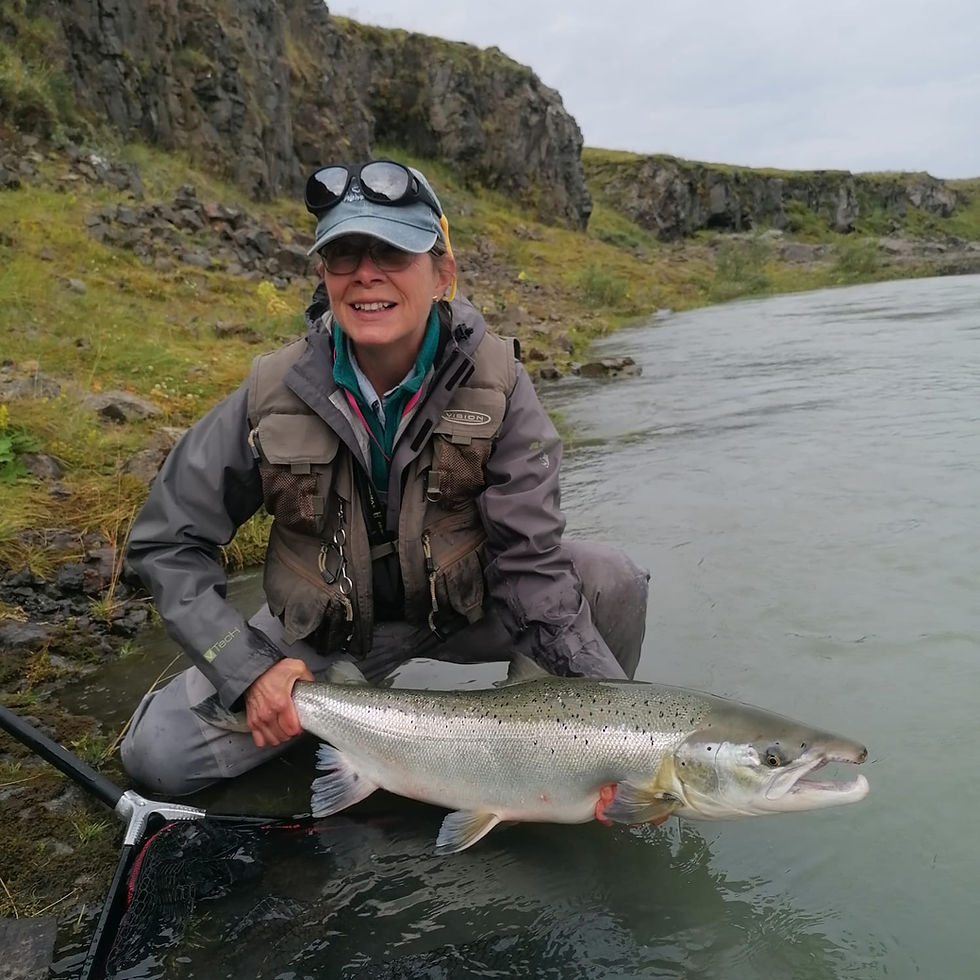Finally, The Real Reason Biologists Hate Salmon Stocking
- Ian Gordon

- Aug 29, 2018
- 3 min read
Kyle Young – Stocking works, but is detrimental.
The green numbers relate to the time frame on the you tube clip where Kyle refers to the particular point.
No doubt that, if carried out in the right way, stocking works! 10.45
No doubt that if carried out in the wrong way, it doesn’t work! 15.59, 16.40
Both in the wild and in hatchery - 10% of spawners = 90% of the adults. Just as 10% of the anglers catch 90% of the fish! Suggesting only one in every ten wild fish picks the correct smawning partner. 11.10
The scenario painted by Kyle is that, over a period of time, lots of hatchery fish produce nothing, and in fact, if breeding with a wild population, are detrimental to the native salmon. In other words, if stocking has taken place then, from a fisheries perspective, it needs to continue!? 14.00
Captive rearing of wild fish reduces its ability to reproduce in the next generation by 85%! 8.20
Every Wild Steelhead will produce 4 adults. What he doesn’t say is that this would be assuming, this is “one” of the 10% he mentions above. This figure will also lead to a decline in wild fish. 13.38 Also, if this was the case, then within 3 generations, wild fisheries would have an abundance!
If the river is predominantly hatchery fish then the wont breed, they are lame. Is this the reason our Scottish Salmon are struggling? If so, then is the “only” answer to start a huge, on-going hatchery programme? 14.15
In 42 stocked rivers in England and Wales catches didn’t increase [At least one stocking event]! Suggesting stocking didn’t work!? 15.59
In those 42 rivers, there were no more adults. Strange, when twice in the presentation he said stocking works, each hatchery fish producing as much as 55 adults! 10.20
"The more successful the stocking programme, the more change to the wild population"! Which in all probability, is why our eggs and stocking effort have been wasted by biologists and fishery managers for the past 30 years. They simply don’t want this to work! This would also explain the conflict of interest between anglers and scientists/biologists!?
The impact of hatchery fish from wild brood-stock hatcheries was no less adverse than that from domesticated stock. I.e brood stock taken from fish farms. 14.00 For me, this is one of the most significant parts of this presentation as it suggests that fisheries with no wild/native stock, I.e rivers such as Ranga, Delphi, Carron, would do equally as well with fish taken from fish farms. How many rivers in the UK could be benefiting from this creating great fisheries??
If catches go up, we can be sure they are damaging the population. 18.50
The question at the end is interesting, as is his attempt to joke about the Tyne [deflecting attention]. He knows the Tyne has benefited from a “Good”, so in his mind, a stocking programme detrimental to wild salmon stocks. What you have to bear in mind regarding the Tyne is, there were only 16 native salmon used in the hatchery.
The main question I would have at this stage is -
Are there any truly “wild” fish remaining in any of our rivers? Given all fishery managers and supposedly “fishery” organisations” are accepting and acting on this hypothesis from Kyle and others like him, I ask this question - What is their plan for our "fisheries"?? We have had 20 years of habitat restoration and the same ideas for no return of wild/native fish thus far. The contradictions in the first two statements above and throughout this presentation can only possibly mean one thing. As far as “angling” is concerned, some types of hatchery work, whilst others don’t. Those carried out properly and with the correct recourses channelled with “angling” in mind, will work perfectly well, whilst others, such as those seen on all major rivers in the UK simply wont!!









Comments